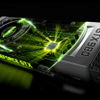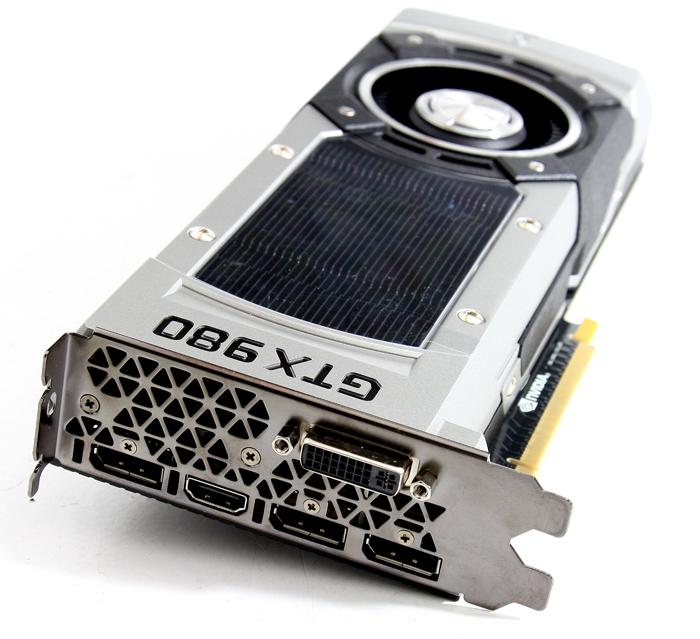Conclusion
Conclusion
Alright fellas, we do hope you enjoyed this first reference review of the Maxwell GM204 based products. It will be interesting to see how well the two cards are received in ithe market by you guys, the initial results show very capable cards, but they indeed perform as expected in the GeForce GTX 780 to even GTX Titan Black range in terms of performance. So power consumption alone isn’t going to be a decisive factor for the guys already owning such cards.
Overall
Both the GeForce GTX 970 and 980 leave a very solid impression. One offers good, the other exceptional performance within its range. It’s not heaps faster than the aforementioned 780 series though, so I do not expect Geforce 780 range product owners upgrading anytime soon. However, if you are in say the GeForce GTX 680 range, then this might be a very nice time to jump on-board with a new card. It is interesting to see that 10 years ago performance per generation nearly doubled. With current release schedules we continuously see 20 to 30% performance increases throughout the board over the last-gen products. That is still respectable as you need to keep in mind that the GM204 is still on 28nm much like Kepler. Injecting more transistors onto a GPU creates yield issues, heat and high power consumption. The GK110 (GTX Titan / Black), whilst being a true beast of a GPU, is testimony to that. With that in mind Nvidia tried to create a product series that is affordable and plays the most high-end and latest games perfectly fine at an acceptable price level. When you look at it from that point of view the Maxwell release is a successful one. This is probably the maximum that Nvidia should and can do on 28nm in terms of improved performance, power consumption versus price and performance.
Thermals
The reference design of the GTX 970 and 980 are the very same cooling wise. With Kepler, Nvidia started using throttling and thus can limit the card when it reaches a certain level of power usage, heat and/or clock frequency. This is a set of tools that allows Nvidia to be very dynamic and flexible with clock frequencies, voltages and load levels. The reference products are set at an offset threshold of 80 degrees C. Once the GPU gets warmer the card will clock down and lower its voltage. The variable is configurable much like Kepler, meaning that on most boards you will have the tweaking ability to allow 95 Degrees C as threshold. Based on normal usage Nvidia finds 80 degrees acceptable and ties the lifespan to 5 years with hefty usage. A higher configured and running card as such would have a lower lifespan prediction. Obviously all board partners will release custom designed and cooled products so you can expect most 3rd party products at a 70 Degrees C range, but more on that in our standalone board partner reviews of course. So basically the lower heat and Wattage resulted in higher possible clock frequencies.
Cooling versus noise levels
Much like the 780 series, we can’t complain about cooling. Nvidia follows the same design as their previous products. Expect values in the 41 to 42 dBA ranges under load and warm circumstances. That means you can slightly hear them while using them heavily. For those that require sheer silence like yours truly, the board partners will most certainly come up with some very nice stuff.
Performance
A nice advantage for the cards is that they now come standard with 4 GB of DDR5 graphics memory, this means gaming sweetness in even the highest resolutions. All games play perfectly at up-to WHQD at 2560x1440. The GeForce GTX 980 is a nice Ultra HD card that certainly offers a nice chunk of performance in that massive resolution, albeit it will fall short here and there. Overall you can play all the modern and latest games with nice AA levels and excellent image quality, the PC gaming way. GTX 980 I would recommend with Ultra HD, especially with MFAA (pending a driver release) you'll be able to play games quite well. The GeForce GTX 970 I'd call a very solid WQHD card, e.g. it is perfect for gaming up-to 2560x1440.
Tweaking
As always there is room left for tweaking, and OMG, not a little. Over the years the limiters that Nvidia implemented might be nice safeguards, but they do set a rather strict upper ceiling when it comes to tweaking and overclocking. Without extra voltage tweaking you can expect a 1300~1350 MHz range for the Turbo clock frequency. Depending on how much your board will take and allow, with voltage tweaking you’ll pass the 1400 MHz range. 1500 MHz is in sight but do not expect miracles. For that you’ll need to revert to a little more exotic cooling solution like liquid cooling or nice board partner solutions. The memory is clocked as standard at 7 Gbps, you'll fairly easily achieve 7.5 Gbps and we even reached 8 Gbps stable - NICE! Overall you’ll see a nice gain in extra gaming performance. Both the 970 and 980 will not let you down in terms of tweaking and overclocking.
Pricing
Prices have been shiften all over the place up-to even 12 hours before the launch. The GeForce GTX 970 and 980 seem to be priced fairly overall, and the GTX 760 will see a price drop as well, Effective for launch, the new lineup looks like this:
- GTX 980: $549 / 452 EUR (ex VAT)
- GTX 970: $329 / 270 EUR (ex VAT)
- GTX 760: moves to $219
Please note, that this an MSRP, final E-tail and Retail prices at launch and after launch varies and can be lower, depending on the market conditions etc. There are no other changes to any other products. In addition, please note that GTX 780 Ti, 780 and 770 have been discontinued with this launch.
Final Words
For those that were hoping to see two products that would obliterate the GTX 780 series this launch will be a bit of a bummer. Performance wise you’ll see roughly the same numbers for the 970, and performance increases up-to say 10~20% with the 980 compared to a Titan Black. But hey now, both cards do offer a nice performance bump over the last generation products and as such are interesting for those that need to upgrade but aren’t on a 780 or higher series product. The cards will have plenty of horsepower under the hood for today’s games, and they are excellent 2560x1440 resolution products armed with the finest game quality settings and even AA levels. A massive benefit is the lower power consumption, though that alone would obviously not justify an upgrade from the 780 series, but less heat is testimony to this and provides better clock frequencies and higher overclocking results. We consider the GeForce GTX 970 and 980 to be a first run in the new high-end performance cards. It is very likely we’ll see a Ti or even Titan version somewhere down the road. The Maxwell architecture is very sound and proves it can deliver big-time whilst remaining in line power consumption, heat and noise wise. Both cards obviously are recommended if you are still on an up-to say GTX 770 or lower product series graphics card.
In the upcoming weeks the GeForce GTX 970 and 980 will start showing in the stores in good quantities, there will be many custom board partner products out as well, be sure to keep checking Guru3D.com for all them reviews. Overall, the GTX 970 is very nice and the price level will make this the most popular card to get, the GTX 980 is absolutely gorgeous in performance but is priced too far away from the 970 to make real sense. However pricing aside, I am impressed, as the cards both took me by pleasant surprise. In upcoming articles we'll deep-dive more into the new features, there was either no time or support drivers wise to test them out just yet. But be on the lookout for MFAA, I am very excited about that one.
Good job nV!
Related articles
Nvidia GeForce GTX 970 and 980 reference review
MSI GeForce GTX 970 Gaming OC review
Gigabyte GeForce GTX 970 G1 Gaming review
Gigabyte GeForce GTX 980 G1 Gaming review
ASUS GeForce GTX 970 Strix review
Palit GeForce GTX 970 Jetstream review
GeForce GTX 970 SLI review
GeForce GTX 980 2 and 3-way SLI review
Recommended Downloads
- Sign up to receive a notice when we publish a new article
- Or go back to Guru3D's front page



